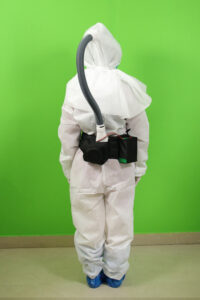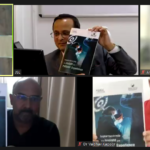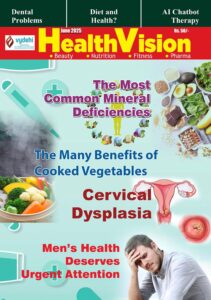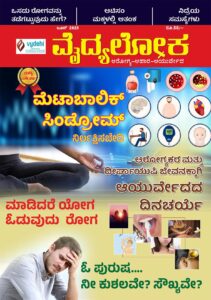PAPR Kits : A Affordable safety kits for Frontline Healthcare Worker has been developed by Amrita Hospitals and AMMACHI Labs. These Powered Air Purifying Respirator (PAPR) kits are superior to regular PPEs being low cost, low weight and having higher flow. A usability study with 20 PAPR kits is underway.
June 1st, 2021: In what could be termed as the first ever made in India, Powered Air Purifying Respirator (PAPR) kits, doctors at Amrita Hospitals in collaboration with AMMACHI Labs, the academic and research centre at Amrita Vishwa Vidyapeetham, have designed and developed extremely affordable kits for frontline workers right from the scratch. This is also another step they have endeavoured to take towards realising the dream of Atmanirbhar Bharat in the healthcare sector.
Till very recently, all the PAPRs in the country were imported at a price of over Rs. 1 lakh each. With the problem becoming acute during the pandemic, the availability of protection equipment became scarce. Amrita Hospitals and AMMACHI Labs launched the product jointly in January this year. PAPR, a protection equipment technology used for supplying purified air to medical professionals working in infection prone areas such as COVID wards, are extremely valuable in preventing healthcare workers from contracting infection and disease from the aerosolized virus particles. PAPRs are generally safer, more comfortable to use, and reusable as compared to normal PPEs with N95 masks. Because of their exorbitant costs, they haven’t been widely used in developing countries like India. Amrita Hospital’s goal is to develop a low-cost solution that meets all the National Institute of Occupational Safety and Health (NIOSH) standards while making these widely available across India and the world at affordable prices.


Dr. Bhavani Rao R., Director, AMMACHI Labs who is overseeing the entire project, said, “PAPRs have been inspired by Mata Amritanandamayi Devior Amma’s vision and guidance encouraging teams at Amrita Vishwa Vidyapeetham to convert the challenges of the pandemic into several world class innovations. The product has been developed by the initiative and ingenuity of scientists, doctors and engineers from several Amrita institutions coming together for one single cause – dealing with the pandemic with cutting edge and social innovations. PAPRs have the potential to help people not just in the medical field but from all walks of life, thereby creating a tangible impact on society. Once all the feedback and design improvements have been incorporated, our PAPRs will be productized and marketed by Omnex Inc. Unlike commercial PAPRs costing anywhere between Rs. 70,000 – Rs. 1,50,000, our PAPR will cost less than Rs. 30,000 per kit.”
Omnex Inc., an international consulting, training and software development organisation specialises in managing system solutions that elevate performance of client organisations. Commenting on the product roll-out strategies, Arun Kumar, Vice President, Omnex Global said, “Omnex Inc. has planned a usability study with 20 PAPRs by medical professionals at AIMS. Based on the feedback from medical professionals, the product will be fine-tuned and scaled up for production.Amrita Vishwa Vidyapeetham and Omnex Inc. will also be applying for certifications for the PAPR product. Currently, work is in progress for gathering data for pre-certification testing requirements for NIOSH approval for US markets. We are also exploring requirements for field testing in an accredited lab of NABL (National Accreditation Board for Testing and Calibration Laboratories).”
Amrita PAPR for medical professionals uses an H14 grade HEPA filter with more than 99.995 percent and not only weighs lessat1.4 kg, but the air flow is also more at > 10 CFM, it is less noisy as motor/blower operational noise – ≤ 68 dBA at ear and the battery pack lasts about 10-14 hours. In comparison 3M PAPR weighs 1.78 kg the air flow is slower at High Flow Nominal of 8 CFM, operating the motor is noisier at ≤ 75 dBA at ear and the battery lasts for less amount of time approximately 7-19 hours (TR-630 7-12.5 hours; TR632 10.5-19 hours).The lower noise of the battery makes communication easier.













